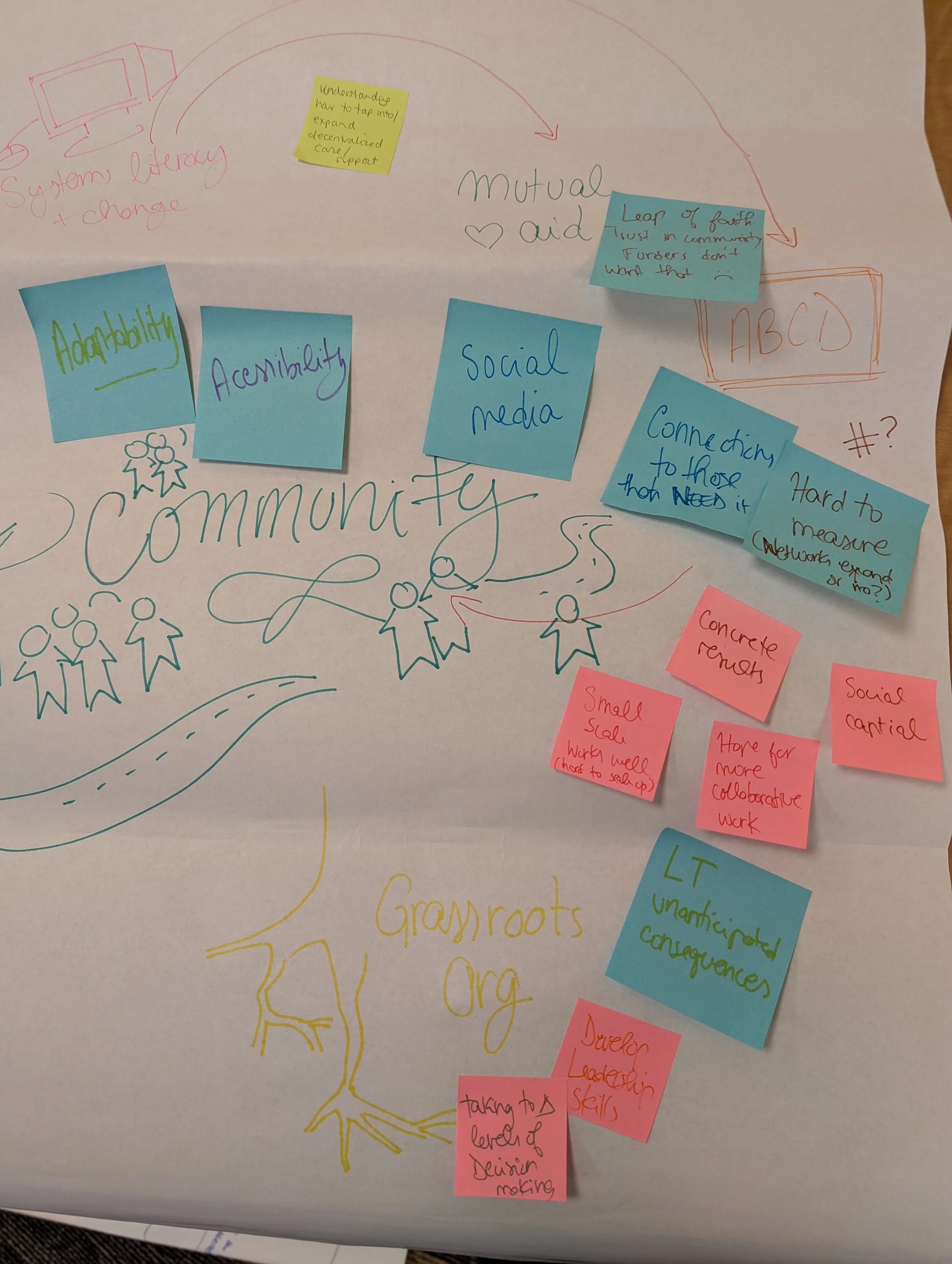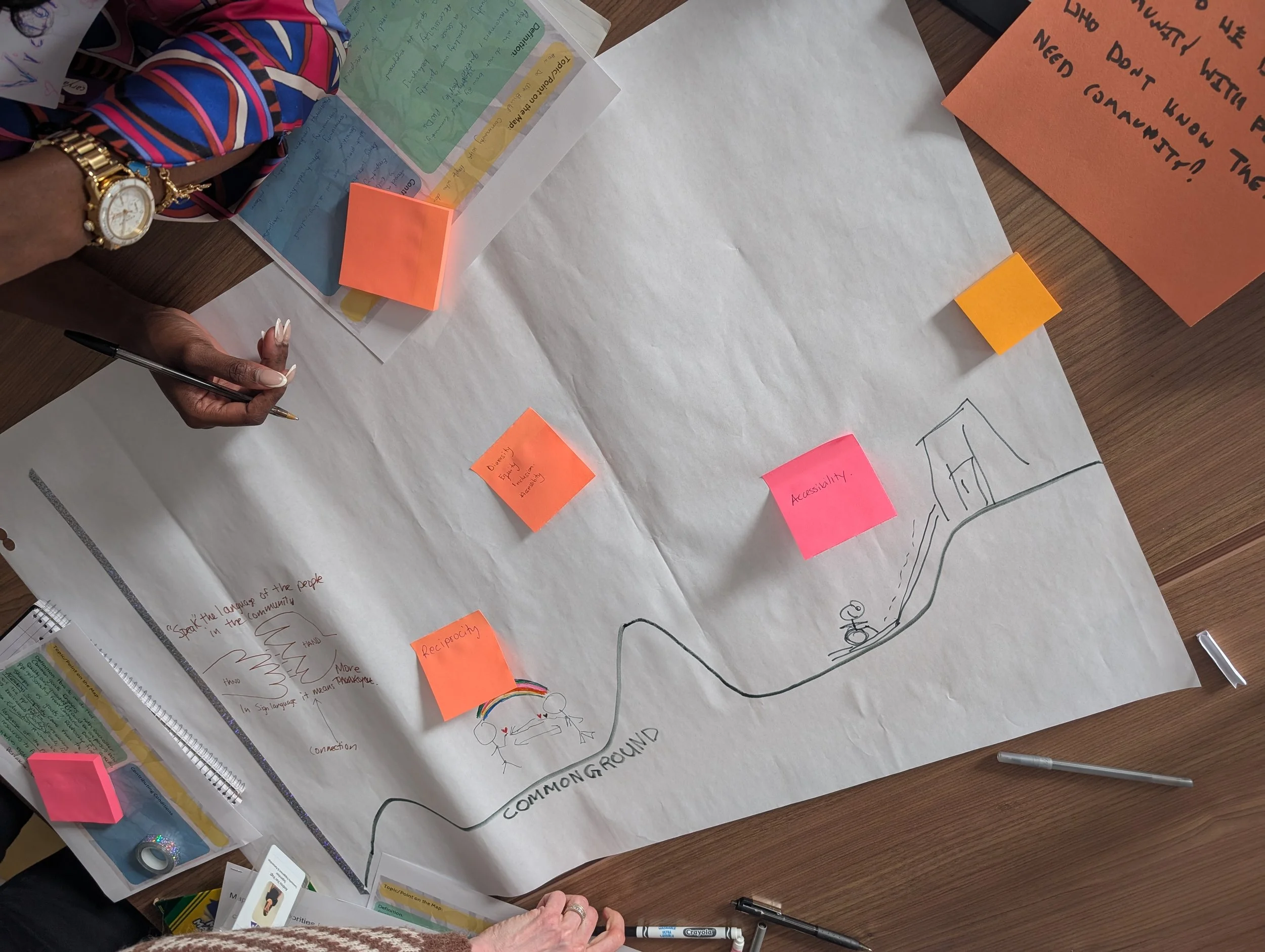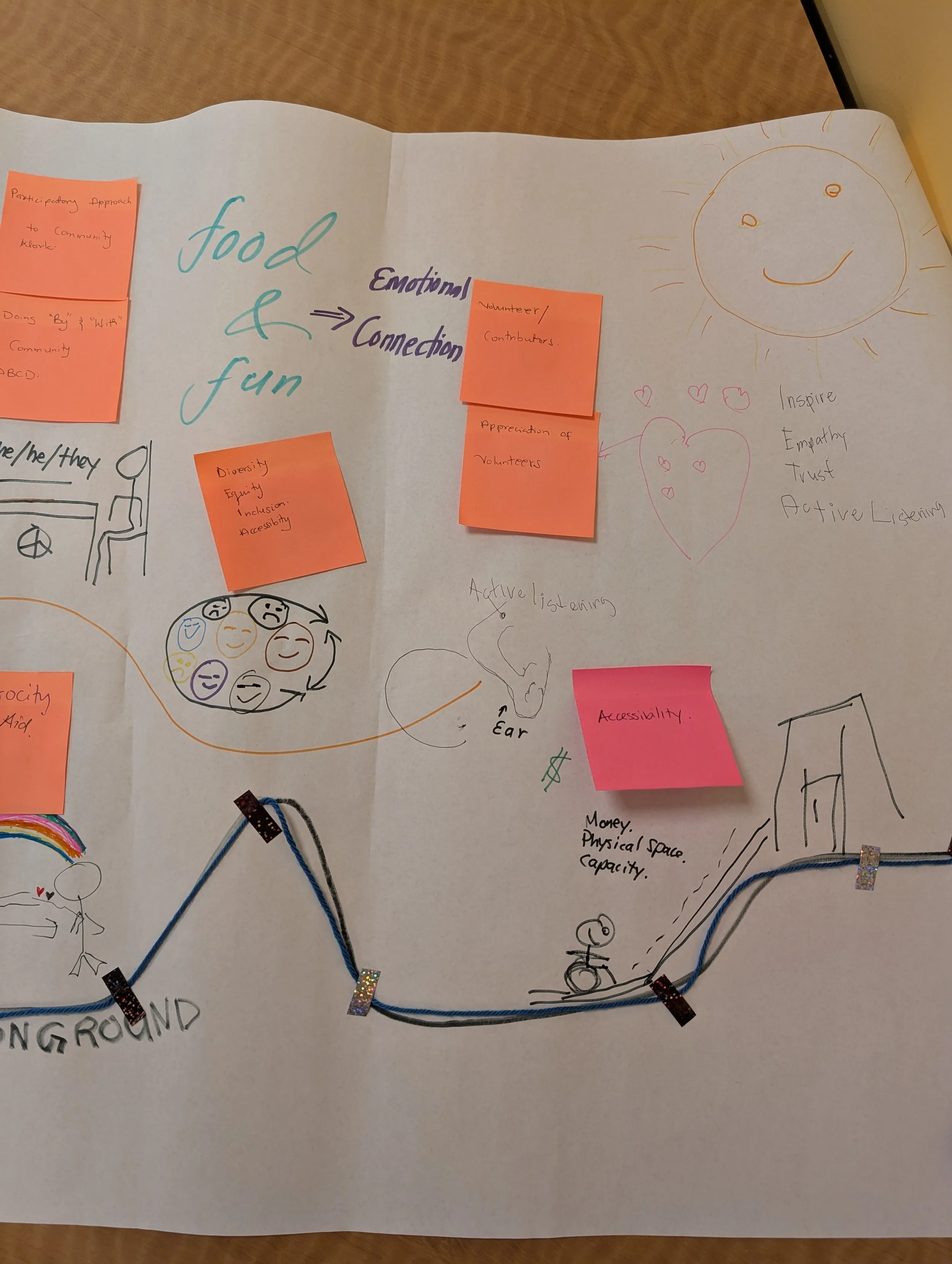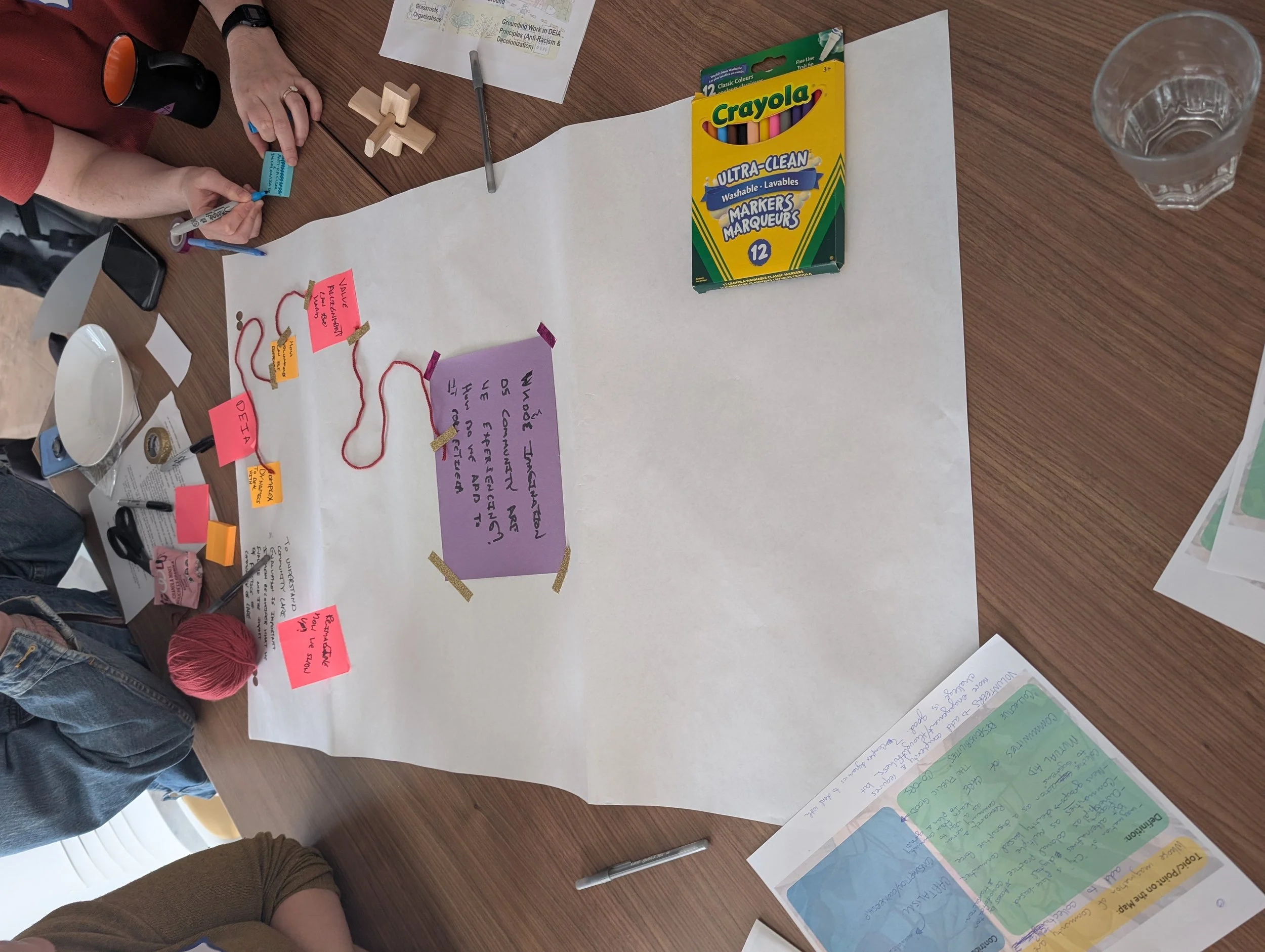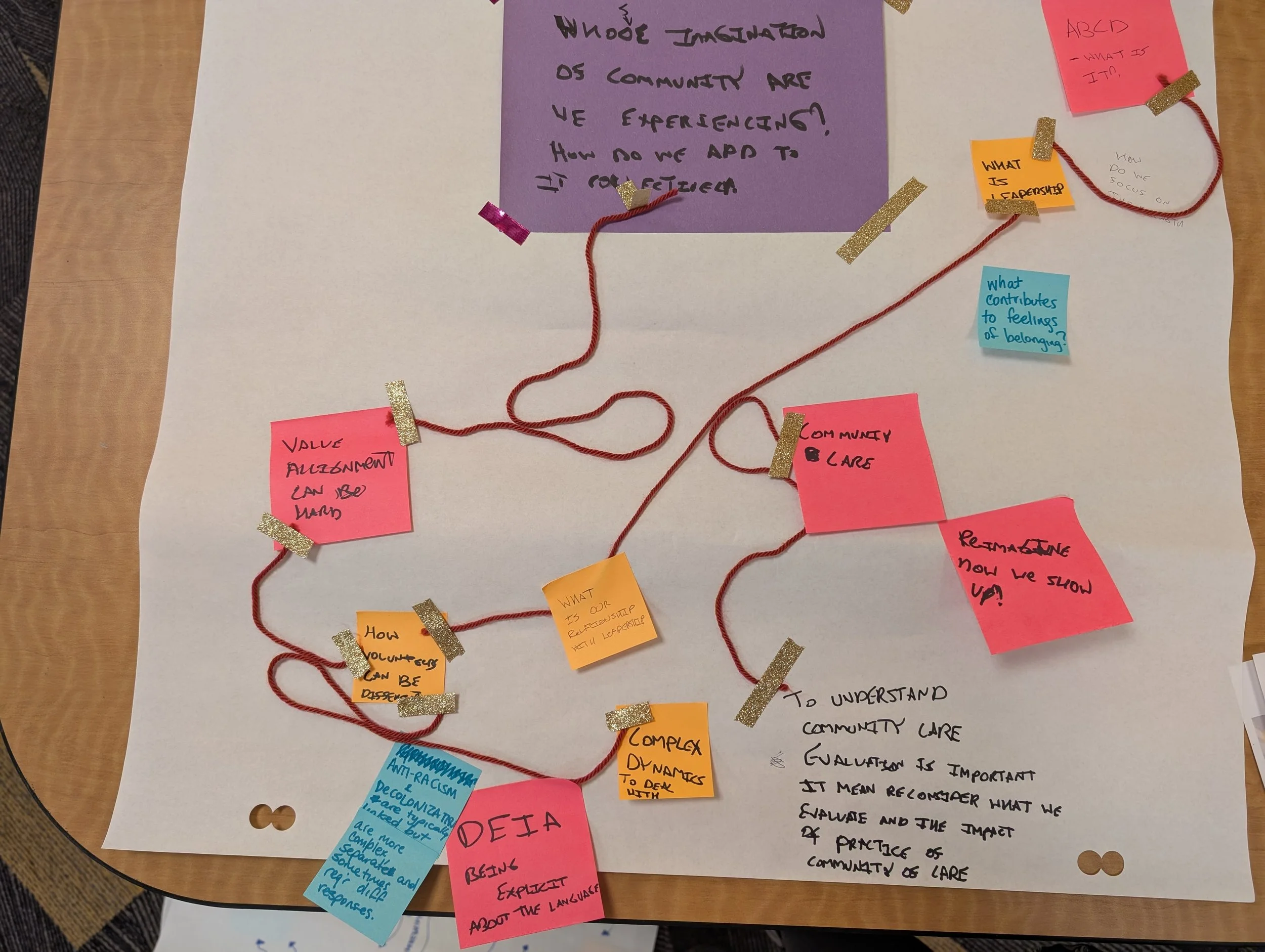What is Community Development in Calgary in 2025?
When was the last time you asked yourself: What does my community development work look like today? How is this different from 2 years ago? Or 5 years ago? What might be coming next?
We know that demographics, cost of living, isolation, size of neighbourhoods and so many other things have changed. We took a few hours to come together to reflect and document. Then got together again to look to the future possibilities based on what we know now.
On March 25th, CDLI gathered folks doing community development work (CD Practitioners) to ask these questions and hear from our peers in other organizations, other subsets of community work, other communities. There were folks working in grassroots organizations, folks working in academia, folks in leadership of large non-profits, neighbourhood changemakers and more.
If only we could bottle the energy, curiosity and connection that was in that room. You know there were sticky notes involved so we’ve shared some photos to relay the beauty of creativity and emergence.
Wish you were there
Step 1: Everyone in the room adds to a list of priorities that have been taking up space in their community development work or the work they support.
Step 2: We group ourselves into tables. Some with people who haven’t seen each other or worked together in years! Time for reunions.
Each table chooses 2-3 of the list of priorities to try to map, how are they related, what is their relationship to each other, what are the causes, how is it being worked with in your community?
Take a Break - Get Something to Drink, Laugh Together
Step 3: Share back. Tell the group how your map is forming. Space for asking questions.
Step 4: Table groups put their final touches, make changes if sharing or questions prompted new thoughts.
Step 5: Reflecting on our roles within community development. Prompts below.
But what is next? We create lots of sticky note brilliance in sessions, how do we bring it forward and not lose it in the layers of community work that fill our brains?
CDLI transcribed and merged all 4 of the maps created into an online Kumu map that we shared back with the group for feedback before including here (and below). We will use this map in our gatherings in the future to revisit, reflect and update. You can too! If you find you have something to add just send an email to cdli@caryacalgary.ca
Some of the Maps Created
And that wasn’t the end
On April 29th we re-convened online. This was our chance to check in and make sure the online map did the best job possible of communicating our in person session. AND look to the future with a focus on possibilities.
Step 1: Building on reflection. What is my role in community right now? What does that role look like?
Maybe one of these: Facilitator of Opportunities, Doer Getting Things Done, Cheering People On, Moving Part of the Daily Fabric, Intentional People Weaver, Sabbatical/Resting Right Now, About to Re-immerse
Step 2: Looking at all that is in the Kumu map, which one or two of the large circles (the priorities in the work) feel present and clearly defined in my role?
Step 3: Which one or two of these large circles (the priorities in the work) feel present and foggy or unclearly defined in my role?
Step 4: Which one or two of these large circles (the priorities in the work) do I want to work with today to vision moving forward with?
Step 5: Take time in whatever way makes you feel comfortable.
Maybe on a couch with a journal, maybe seated with your feet firmly on the ground and eyes closed, maybe at your desk with colorful pens and big paper.
Given the priority you have chosen, find a picture in your head or the words to answer:
How can I practice community with others in ways I haven’t been?
What do I need to set in place to do this?
Who can I tap on the shoulder to work with me in this? What would be a meaningful way for me to work with them?
*When you have worked through this and feel ready to stop - because you feel the vision/plan is completed or your time is running out - either take a big deep breath in and out or get up and shake your muscles out gently. Leave it here for now.
Step 6: Come back to it and share with the group or with someone who will cheer you on and keep you accountable.
So What? I wasn’t There and It isn’t the same reading about it
The last few years CDLI has heard from people who participate in the network that they value the space CDLI provides to connect, dig deep and act with intention. They mention that this feels unique in work that can often feel urgent or in constant shift. The plan between these two gatherings was to do two things:
1) Document the current context of Community Development in Calgary through the Kumu map. You can take this and use it!
A board meeting discussing the value of doing community development work, a team meeting to validate and affirm what your team is seeing, a planning session for new programs or approaches, and so much more.
2) Taking time to act with intention. Reflecting and planning can feel different when you are doing it by yourself or in a small team, and it is important, no matter what community work you are engaging in. Either following the steps here or by exploring other ways of doing this you give your best to the work and in our work this means the best to the community.
“So much of what we do in community development and collaboration is future oriented. We work to plan strategically, to adapt to shifting funding contexts and structures, to pivot with the communities we work alongside, and to increase our inclusive and equitable impact. Much of this work is about shaping the future to better match our hopes for a more just and liberated world. To be clear, we also sustain and maintain, we contribute, and we connect, but implicit in our work is the assumption that we are working toward a better future for all.”
Tamarack Institute recently published a blog post by Consulting Director of Collective Leadership Daren Ofako that overviews some ways community development is using Futures in Community Work and provides some some common approaches. Daren starts by saying:
Written by Lee-Ann Baines

